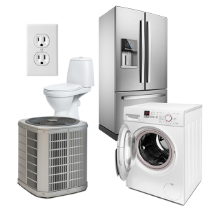Community Solar Puts The Power of Sun Within Reach
Looking for ways to reduce your carbon footprint? Want to take your efforts beyond reduce, reuse, and recycle to include renewable energy, without adding solar panels to your home?
Look no further than your community.
Community solar takes the panels off your roof, but still delivers power to you and others in your network. Sometimes called a solar garden, community solar is a solar power plant whose electricity is shared by more than one household according to EnergySage, an online marketplace that helps consumers choose solar options.
You can own, lease or subscribe to a number of panels in the system and then receive electricity or credit for your share. Power suppliers vary and can include municipal utilities, solar developers, homeowners, business owners, or community organizations, such as electric cooperatives.
“The primary purpose of community solar is to allow members of a community the opportunity to share the benefits of solar power, even if they cannot or prefer not to install solar panels on their property,” according to EnergySage.
Think of it as a way to commit to solar energy without committing to the hardware and installation.
That can be a boon in terms of both expense and technology.
Benefits of Community Solar
Shared solar means individual homeowners and businesses don’t have to pay for their own solar panels, or have (or hire) the technical expertise to install and use them. Those burdens are shared across the group, which also allows businesses and individuals to invest at a level they can afford while still reaping the benefits of solar. That means it is not out of reach for lower- or middle-income households who can’t afford to install their own system, since they can subscribe for an amount within their budget.
It also eliminates the need to own or have just the right roof to tap into solar.
A National Renewable Energy Laboratory report found a little less than half of both households (49 percent) and businesses (48 percent) can’t host photovoltaic solar systems because they rent their spaces or don’t have the right owned roof space, which means there’s lots of room for growth in community solar.
In a 2016 story, Market Watch reported 14 states and Washington, D.C now have legislation supporting community solar, and that the number of megawatts of community solar capacity more than doubled from 2011 to 2014 and is expected to grow to seven times that in the next three years.
The U.S. Office of Energy Efficiency and Renewable Energy reports by the year 2020 shared solar could account for up to half of the overall distributed solar market in the United States.
Looking for other innovative solutions for your home? 2-10 HBW offers the most comprehensive coverage for homeowners. Let us help you get started with a Home Warranty today!








